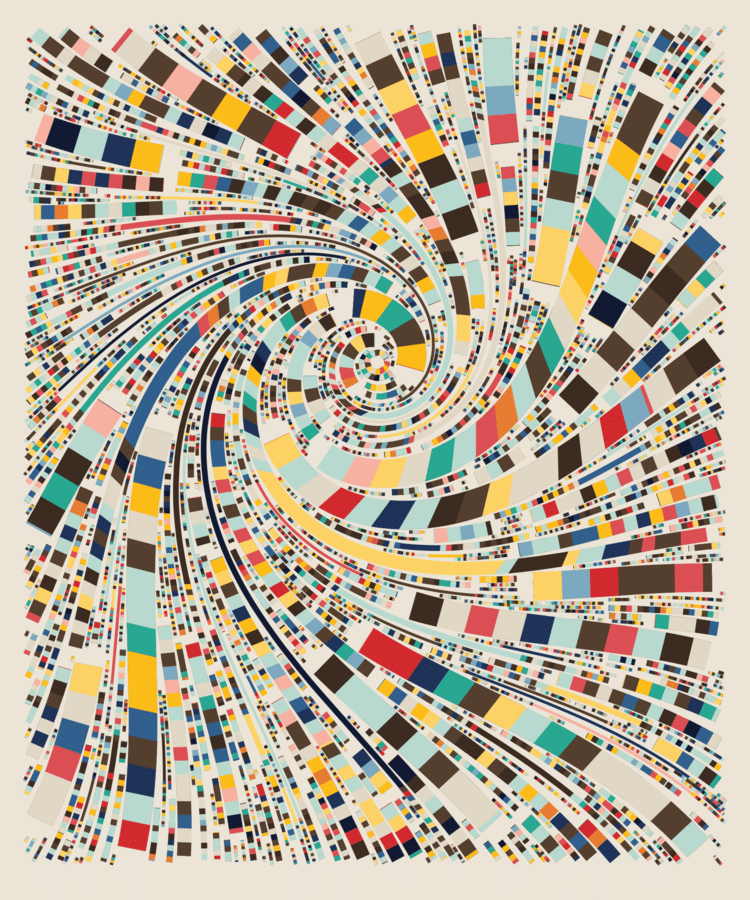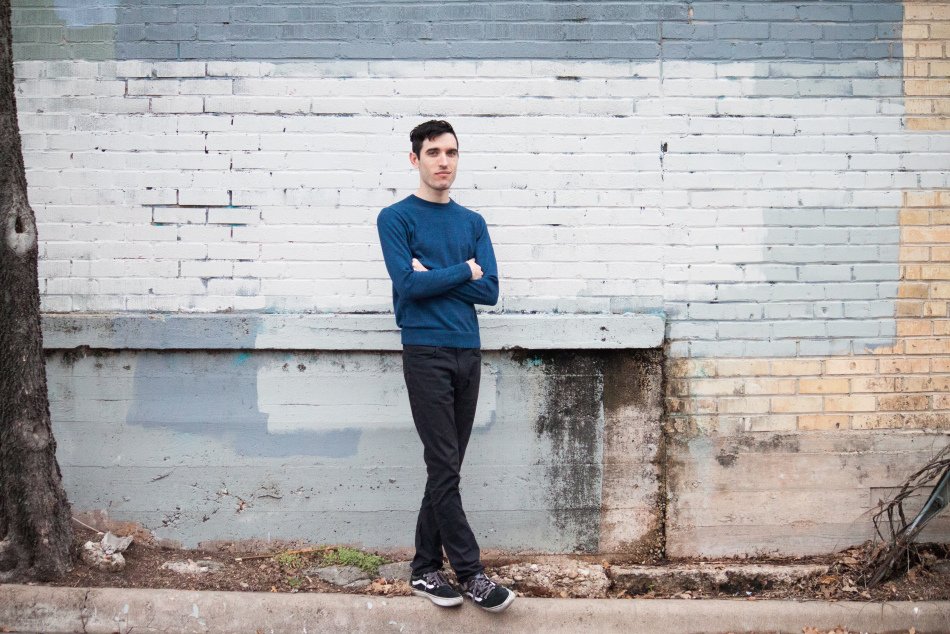Tyler Hobbs is a visual artist and generative artist from Austin, Texas. His work is the result of plotters, algorithms, coding and paint. Revolving around computational aesthetics, Hobbs’ art explores the interaction of computer hardware and software with the natural world.
Tyler Hobbs’ artistic journey
Tyler Hobbs had dabbled in traditional portrait, figure and landscape drawing for years. However, he lacked an intimate connection to traditional art genres, which made him fall out of love with traditional art.
He went on to study computer science and graduated in 2010. However, around 2014 Hobbs discovered generative art and tried his hand at it. This moment of discovery came as he tried to find a connection with art and a way to combine his artistic and coding skills into something innovative.
On The 21st Century Creative podcast, Tyler Hobbs said: “I started to stumble upon the generative art community and learn that it was already a thing. And I very quickly figured out that this was something that was going to work well for me, and I’ve been pursuing it since then.”
By 2017, he had saved enough to become a full-time artist. At that time, he produced about 100 pieces a year and made ends meet by commissions and selling prints. Being a full-time artist was far from easy. As a result of loneliness and financial hardship, he founded the start-up Travel Boss in 2018, which focused on business travel.
Unfortunately, the company closed due to the pandemic. However, this led Tyler Hobbs to discover Artblocks – and it is safe to say that this chance discovery quickly changed the course of his future. After he was hand-picked by the platform as a curated artist, Hobbs was quickly catapulted to success.

About Hobbs’ breakthrough work “Fidenza”
According to Tyler Hobbs: “Fidenza is my most versatile generative algorithm to date. Although it is not overly complex, the core structures of the algorithm are highly flexible, allowing for enough variety to produce continuously surprising results.”
Inspired by Abstract Expressionist artist Francis Klein and named after a small town in northern Italy, Fidenza captured the imagination of art collectors worldwide. A total of 999 NFTs were dropped. They sold out in 25 minutes for 0.17 ETH each – resulting in about $400,000 in sales. Not only that, the Fidenza NFTs were even more successful on the secondary market, selling for about $85 million.
Fidenza’s underlying technique is flow field algorithm. This coding technique enabled Tyler Hobbs to produce organic curves that are also aesthetically pleasing. He also uses the “Collision Check: No Overlap” feature to ensure no overlap between the shapes. Fidenza also employs probabilistic colour palettes – a set of pre-selected colours that work well together. Undoubtedly, the technology underlying Fidenza is as interesting as the artworks themselves.
About his artistic process
“So for myself, my artwork is created entirely through programming. I don’t draw things by hand or use any sort of Photoshop or post-editing in any of my work,” said Hobbs on The 21st Century Creative podcast.
Hobbs also pointed out that when creating generative art, the artist creates a programme that results in the artwork. Therefore, by selecting colours, aesthetics and pattern preferences, the artist works hand in hand with technology to express himself.
To give collectors an understanding of the process, Tyler Hobbs provides a snapshot of the programme with the artwork. This is mainly because Hobbs considers coding an essential part of the artwork.
Although generative art has existed since the 1960s, artists like Tyler Hobbs are undoubtedly pushing the genre to new heights. Thanks to the popularity of NFTs, unconventional artists can now, more than ever, educate people about generative art and show everyone how technology and art can indeed coexist.
Are you tired of missing important NFT drops?
Check out our NFT Calendar!
Receive the biggest NFT news of the day & recommendations in our Daily newsletter.
All investment/financial opinions expressed by NFTevening.com are not recommendations.
This article is educational material.
As always, make your own research prior to making any kind of investment.




